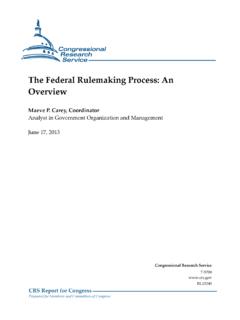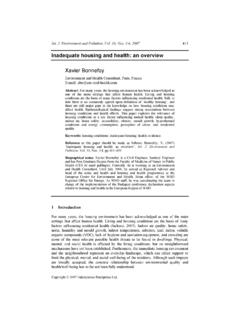Transcription of Healthy Waterways Strategy - Melbourne Water
1 November 2013. Healthy Waterways Strategy A Melbourne Water Strategy for managing rivers, estuaries and wetlands Executive summary Waterways are rivers, estuaries and wetlands and they play a central role in many aspects of daily life. They provide the foundation of complex ecosystems, and are important for a region's productivity and liveability. Context Melbourne Water is responsible for ensuring that Waterways in the Port Phillip and Westernport region are protected and improved on behalf of the community. As part of this responsibility, we have taken a strategic and collaborative approach in developing this Healthy Waterways Strategy (HWS). Our community engagement has highlighted how much the people of the Port Phillip and Westernport region value Waterways in supporting environmental health and liveability.
2 The importance the community places on Waterways is fundamental to Melbourne Water 's approach to waterway management. This Strategy focuses on investing in areas that the community values and that will protect and improve environmental values and increase liveability. The HWS outlines the role Melbourne Water will play, in partnership with the community, our customers and stakeholders, in managing Waterways to ensure their value to the community is protected and improved. The HWS guides investment in waterway health in the Port Phillip and Westernport region from 2013/14 2017/18. It defines a vision for the region, identifies priority areas and management actions, and sets out targets to measure the effectiveness of these actions and a framework for delivering the Strategy .
3 OUR VISION FOR Healthy Waterways . Healthy and valued Waterways are integrated with the broader landscape and enhance life and liveability. They: > Connect diverse and thriving communities of native plants and animals. > Provide amenity to urban and rural areas and engage communities with their environment. > Are managed sustainably to balance environmental, economic and social values. The HWS is complemented by the Stormwater Strategy , which articulates Melbourne Water 's role in managing rural and urban runoff. Together, these strategies provide an integrated Water cycle management focus to achieve multiple outcomes for the community including Healthy Waterways and bays, wellbeing and amenity, alternative Water supply and public health.
4 Healthy Waterways Strategy 2013/14 2017/18 Executive summary Strategy development The HWS builds on work undertaken through the Regional River Health Strategy (2005) and Addendum (2008). It's development has been guided by an understanding of community expectations, recognition of the importance of partnerships, use of best scientific research and a robust engagement process. The engagement process included consultation with the community across the region about the vision for Waterways , the values of and threats to Waterways , and how Melbourne Water and the community can work in partnership to achieve the vision. Key elements of the Strategy development are: > Expanding the Strategy 's asset base to include wetlands and estuaries, as well as rivers and creeks, so that Waterways are managed holistically.
5 > Adopting key values as the basis of the target framework to make the Strategy more meaningful to the community and better reflect the vision. > Targeting works in priority areas to achieve the most effective outcome for key values while continuing to invest across the region to maintain system health and long-term potential where possible. > Developing and implementing the Strategy within an adaptive management framework that enables us to incorporate and act on new science as it becomes available. > The approach is grounded in our understanding of the relationships between management actions, waterway condition and the values that Waterways support, as represented in the figure below. These relationships underpin our management approach and help to target investment.
6 KEY VALUES. Amenity Birds Fish Frogs Macroinvertebrates Platypus Vegetation S U P P OR T S. environmental condition of Waterways Habitat Water Quality Flows Connectivity Physical Form p r o t e ct /. i mp r o v e management actions 1. Key values our Waterways support The Strategy takes a fresh approach to setting waterway management targets by focusing on seven key waterway values: amenity, birds, fish, frogs, macroinvertebrates, platypus and vegetation. Setting targets around key values connects the Strategy with what is important to the community and with the vision we are seeking to achieve. We aim to protect and improve those aspects of waterway condition that are most important for the key values. A focus on monitoring and understanding both key value condition and waterway condition ensures our management actions are targeted most effectively to meet this aim.
7 The values were selected based on: > Their importance to the community > The availability of data to assess condition > The ability to appropriately represent the range of values found in rivers, estuaries and wetlands. This new target framework and approach has not greatly altered the type of works proposed in the Strategy , but has helped us prioritise where we undertake works to maximise their benefit. Targets have been developed to reflect community values and what is achievable given finite resources. In the HWS, we aim to invest public funds effectively by targeting priority actions and areas to support the key values, and efficiently by taking an integrated planning approach that addresses flows, Water quality, vegetation and stream bed and bank structure and connectivity.
8 Management approaches A variety of approaches can be used to effectively manage Waterways and to protect and improve their condition to support values. Management approaches in this Strategy have been grouped into the following themes: > Planning, Strategy and guidelines > Building stewardship and sharing knowledge > Advocacy > Enforcement > Vegetation management > Habitat management > Stormwater management > Asset protection and renewal > Environmental Water > Diversion management. For each management approach, the Strategy outlines: responsibilities, principles for the program, key directions and activities 2013 18, key stakeholders and the target. Catchments and systems The region's five major catchments have been divided into 14 sub-catchments known as systems'.
9 The system boundaries have been selected to follow natural catchment boundaries, enable upstream and downstream impacts to be considered as part of a connected waterway system and to provide a scale appropriate to measure change in key values. For each system the Strategy outlines: > An overview of the system including information on Waterways and values condition > Historic trend, current condition and proposed expected outcomes for condition of each of the key values 2 Healthy Waterways Strategy 2013/14 2017/18 Executive summary > Strategic priorities for the next 20 years > Priority areas for investment over the next five years > Implementation targets for the five year life of this Strategy > Regional program actions. Financial investment With finite resources to improve waterway health, Melbourne Water has prioritised management activities based on catchment knowledge, experience, scientific and social research, consultation and expert advice.
10 We also aim to balance environmental, social and economic values and short and long-term issues. This Strategy proposes funding of $ million of capital expenditure and $178 million of operating expenditure from 2013/14 2017/18 to secure and improve waterway values.*. Adaptive management Adaptive management allows us to improve the effectiveness of natural resource management by learning from experience and utilising current knowledge to inform decision making. A key tool for managing knowledge to influence decision making is through the use of conceptual models which document relationships between actions and outcomes, and the level of certainty in the strength of relationships. Monitoring, investigations and research help test and refine critical assumptions in these conceptual models.






